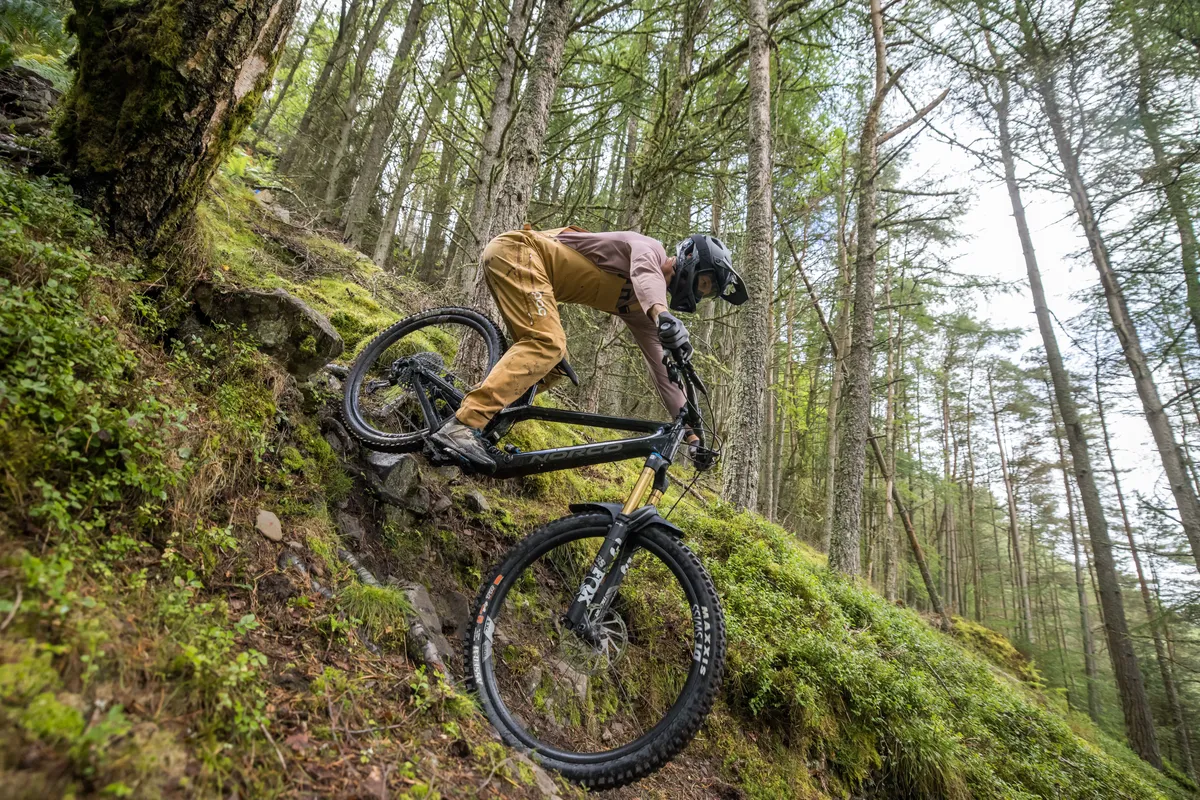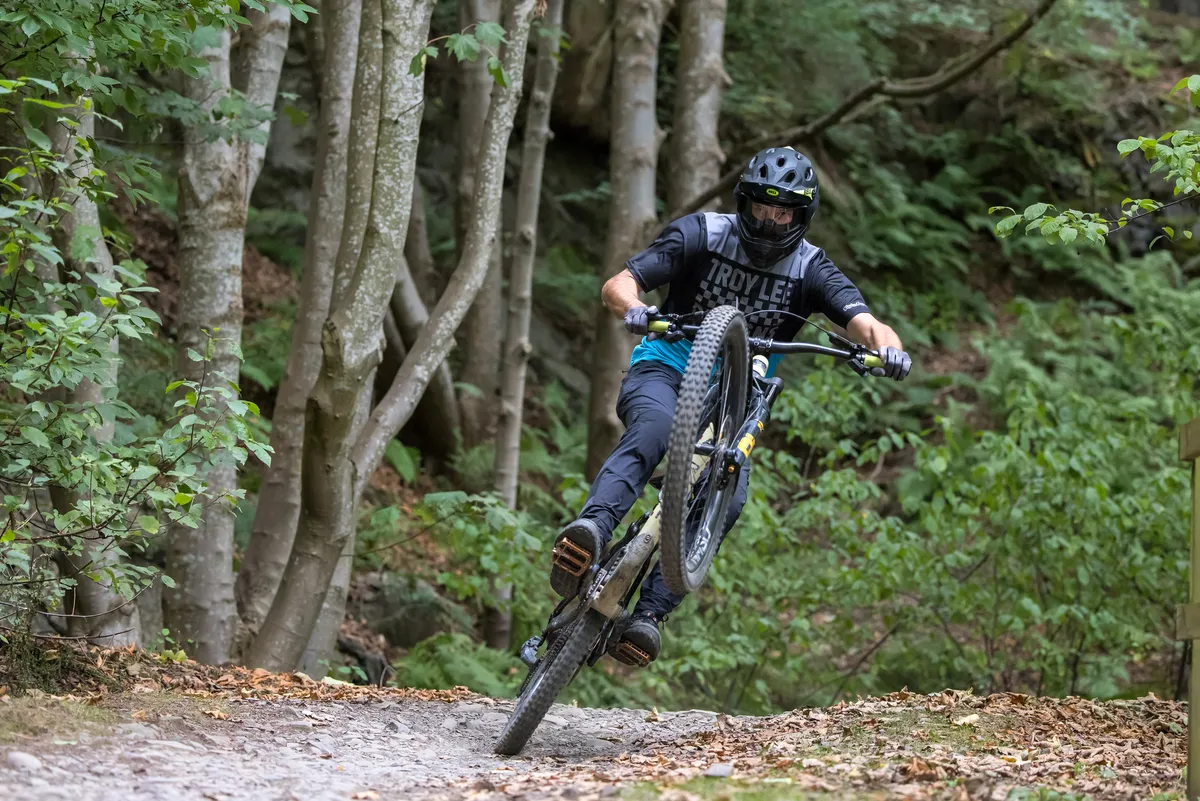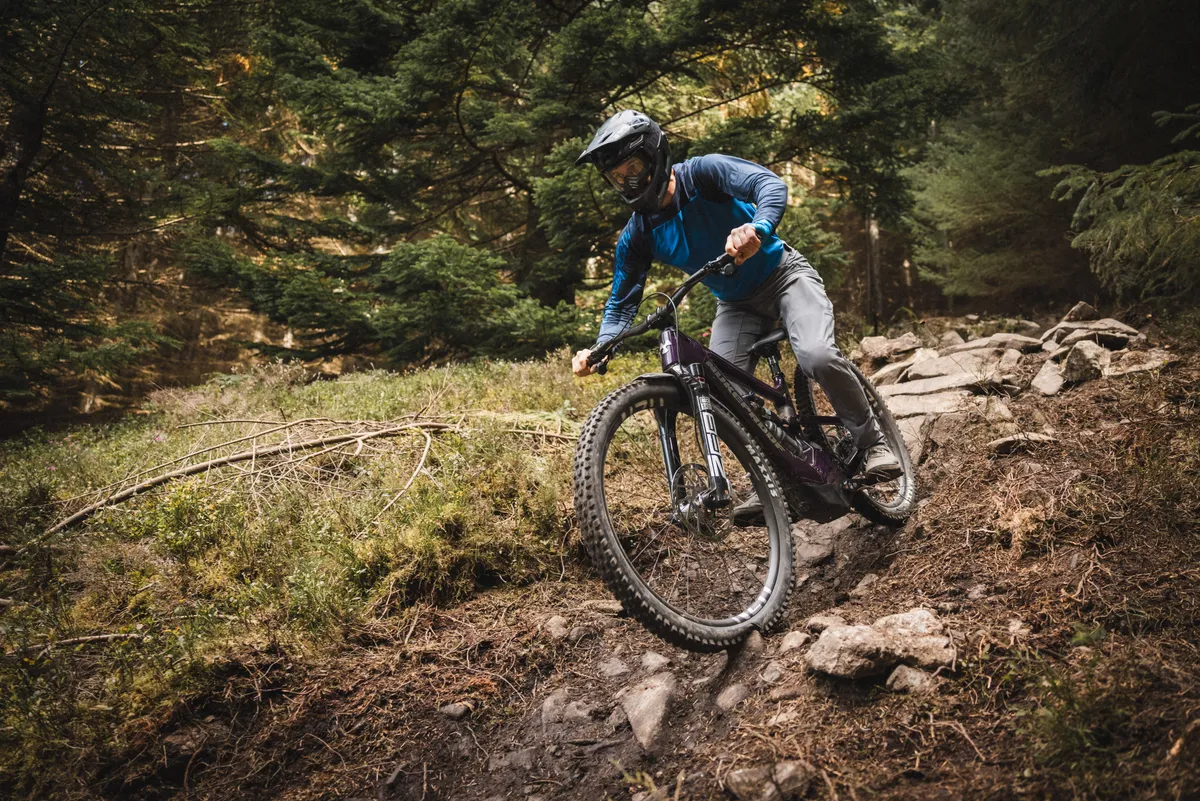Suspension forks are rightly seen as one of the most significant upgrades you can make to your bike.
Not only are they expensive, but the performance gains the best mountain bike forks can bring to your riding are measurable with improvements in speed, confidence and fun.
However, accessing the next level of fork performance isn’t just a case of buying and fitting your preferred set and heading out onto the trails.
Setup, rider preferences and weight – and finding the right damper tunes – all play a huge part in how they can feel out on the trail.
In testing three of the latest, highest-performing suspension forks on the market, I’ve done the hard work for you.
Read on to discover the five things I learned from testing and fast-track your way to top-tier performance.
But before that, here are the three forks I reviewed, how they scored, and links to each of the reviews:
Fox 36 Podium Gold Grip X

Read Alex's review of the Fox 36 Podium Gold GRIP X
SQUIRREL_13148465
Öhlins RXF36 m.2

Read Alex's review of the Öhlins RXF36 m.2
SQUIRREL_13148466
RockShox Lyrik Ultimate MY25

Read Alex's review of the RockShox Lyrik Ultimate MY25
SQUIRREL_13148467
5 things I learned from testing the latest trail forks
1. Finding your ideal setup shouldn't be so hard

Damper tunes and feel, spring volumes and pressures, and chassis design all play their role in fork setup.
These things aren’t standardised across forks – sometimes differing within the same model range – let alone from one brand to the next, even if those forks have the same travel, stanchion diameter and overall intended use.
The settings you’ve got on your current fork are unlikely to port over to your new one, so you’ll be starting from scratch.
While brands offer setup guides (RockShox’s TrailHead smartphone app springs to mind) and recommended settings, these are merely a starting point rather than optimised for your needs.

But herein lies a minefield of potential performance woes, especially if you’re not confident translating how a fork feels into the adjustments required to change it.
Add in the preferences of one fork to rely more on its damping over the air or coil spring for support, and the opposite for another model, and suddenly the setup trends you’ve got used to can be miles off the mark.
Then factor in the number of adjustments – and how much of an effect they have on the fork – and you could be in another world of confusion. One click of an adjuster on one fork can have a bigger effect compared to the same amount of dial turning on another.
Experimentation is the best way to get your fork performing as well as it can, but this is time-consuming and can lead you down a rabbit hole of overthinking.

So what’s the solution? Data-led setup days – such as the ones offered by Tweed Valley Bikes or Sprung Suspension – are a sure-fire way to get the most from your suspension, but they can be costly.
To make setup simpler, fork manufacturers could learn a thing or two from Norco’s Ride Aligned setup tool. This takes rider preferences and style, body type, trail type and other parameters to help you dial in setup.
Brands know whether their forks have a bias towards the spring or damper for support, and how their stock tunes should feel.

This privileged information should be used to help the consumer set up their fork, rather than serve as a quasi-gatekeeping measure to complicate the setup process.
In my eyes, there should be user-friendly tools that riders can plug their personalised information into, which then spew out recommended setups to get the best performance from their £1,000-plus forks.
Riders should never be left guessing how to adjust the compression and rebound settings on their fork or bike.
2. The perfect setup is crucial for the best performance

What’s even more frustrating is that if you don’t have the right setup, your fork will feel terrible on the trail.
For example, the Öhlins RXF36 m.2 fork I tested recently felt best with a setup quite a long way off the brand’s recommendations.
The air spring ended up feeling best when set much softer than it should have been according to the setup guide. I finished with 75psi in the main spring, instead of the 95psi that was recommended, but only after a lot of experimentation, and having the confidence and knowledge to tweak the damper to compensate for the additional sag.
But once I’d found the optimum setup, the performance on tap was seriously impressive and hugely beyond that of the stock settings.

Fox and RockShox’s forks were easier to set up than the Öhlins, but having a back catalogue of settings that I know work well gave me a great starting point to begin honing in performance. This is a luxury I know a lot of people won’t have, so their journey to perfection will be slower and more convoluted.
Spending the time to get your forks running as well as they can is more than worth it. Don’t be afraid to change things – and if you do make a change, make it count.
Twisting a dial a small amount is fine once you’re getting close to the perfect feel, but to begin with, learn how much the dials change the fork's feel. Bigger changes are the best way to do this.
3. Balancing smoothness with support creates the winning formula

Forks have a tough job; they need to balance suppleness and smoothness (which equates to comfort and traction) at the start of their travel with support in the mid-stroke (creating stable geometry), and ramp-up and bottom-out resistance (reducing harsh full-travel moments).
This blend of performance traits is basically like having your cake and eating it. Impressively, this latest generation of forks gets closer than any previous one at doing just that, but even then each model has its own personality.
The least sensitive but the most supportive is Fox’s 36 GRIP X; it loves to be worked into the terrain – pushed, pumped and driven into compressions – but as a result feeds back some vibrations to the rider. Active riders, rather than passive ones, will love the feel.
The Öhlins RXF36 m.2 swings the pendulum in the other direction, riding lower and using its travel more willingly. While there’s not a lack of support on tap, it uses its travel generously, but also provides impressive amounts of comfort.

At the top of the pile is RockShox’s latest Charger 3.1 Lyrik Ultimate, which blends the support of the Fox and builds on the Öhlins fork's smoothness, creating the silkiest, grippiest ride of the lot.
In this respect, the Lyrik has perfectly balanced smoothness with support.
Accessing ultimate performance is now well within your grasp, especially if you go for our test-winning Lyrik.
4. Damper tunes are probably still too heavy

Across my group of riding friends (of varying sizes, genders, ages and abilities), the universal setup preference is to run our fork and shock damper adjustments fully or nearly fully open.
It’s the same story for BikeRadar’s dedicated tech team of MTB testers; we all prefer fully or almost fully open damper adjusters.
In my eyes, that rules out a coincidence; there must be a wider issue at play where fork-damper tunes are set too hard.
It’s one I’ve discussed previously: In my eyes, stock damper tunes are too heavy for almost all riders out there.

The pros – who help develop these tunes – have considerably different needs from mere mortals like you and I. They hit bumps harder, ride faster and prioritise outright speed over anything else.
Unfortunately, that means the tunes they develop are about as well suited to your average mountain biker’s needs as a Formula 1 car is to driving to your local supermarket.
But in this most recent round of updates, brands have cottoned on to the ‘all open’ damper preferences of many.
Brands are lightening stock compression tunes and offering aftermarket, officially certified tunes that are readily available.
Riders at the far ends of the damper adjustment bell curve can now proactively get themselves in the middle of the adjuster range.

This extends the usability of the adjusters; now your 50kg beginner rider has a wider range to make their fork’s damping softer or harder depending on their needs or the terrain they’re riding.
Öhlins has offered official re-tunes all along, but the brand hasn’t been great at shouting about it. There isn’t an accessible way to understand what you – as someone who may be struggling with setup – need to do to get the most from your fork.
On Fox’s latest GRIP X damper, I was still running the external rebound adjuster fully open. On RockShox’s Charger 3.1, the rebound was only three clicks away from its fully open position, and the Öhlins was also run fully open.
At 75kg with an aggressive style, I should be close to the middle of the adjustment range (even if I prefer faster than average rebounds).
But I’m not – I’ve almost always got that adjuster close to or fully open.
Once again, for my hypothetical 50kg beginner, having a fast-rebounding fork isn’t possible with the stock tunes.

But now that more brands are investing in different, officially supported tunes, maybe it’s time they offered their forks with the different tunes in them from the factory.
For example, you could have the Lyrik Ultimate Light, Medium or Heavy fitted with each corresponding tune. This is something I’d love to see.
And because the tunes are compatible with all models of fork, if there was a shortage of Medium forks, for example, consumers could purchase a Light or Heavy and install the medium tune afterwards.
Come on brands – make it easier for your customers to get what they need.
5. Lighter and heavier riders are always going to struggle with performance and setup

My hypothetical 50kg novice – who sits at one of the extreme ends of the rider bell curve – proves this point.
How can they, as someone who needs the lightest rebound and compression tunes, and softest springs, get what they want when your average riders are using settings closer to ones recommended for those lighter riders?
In short, they can’t.
It’s the same story at the other end of the spectrum. Heavier and bigger riders will have a hard time getting fork and shock pressures high enough to support their weight; many forks have upper pressure limits that are prohibitive.

I know some of my larger friends struggle with too much sag and getting the forks riding high enough in their travel.
The only upside for bigger riders is the dampers. While lighter and mid-sized people will struggle to get them light enough, the harder stock tunes will give heavier riders more scope to adjust their damper’s performance to their needs.
In an ideal world, the stock damper tunes would be reset so riders of average ability, weight and size would sit slap-bang in the middle of the adjustment range. This recalibration would help improve performance for everyone.
